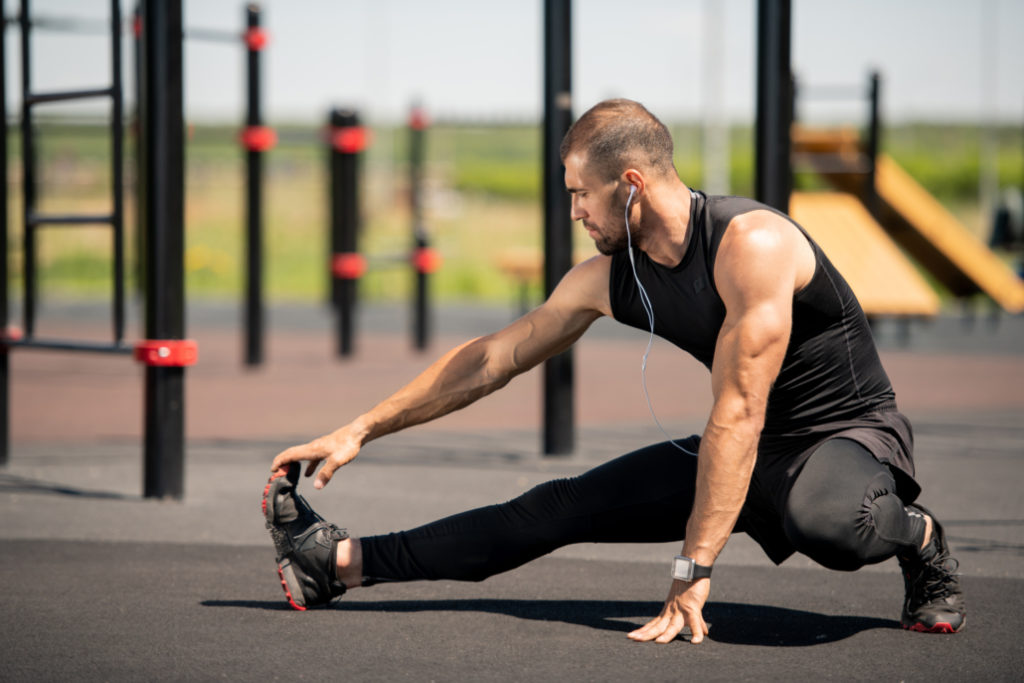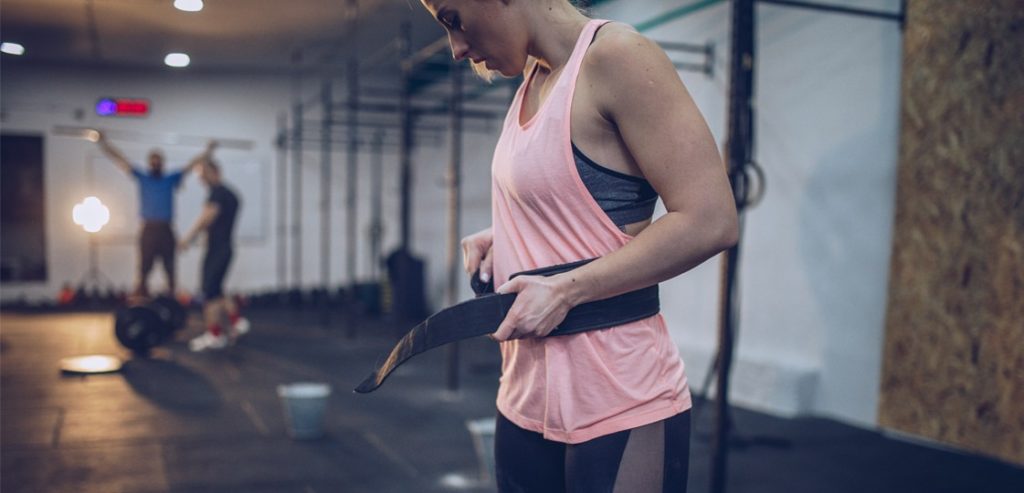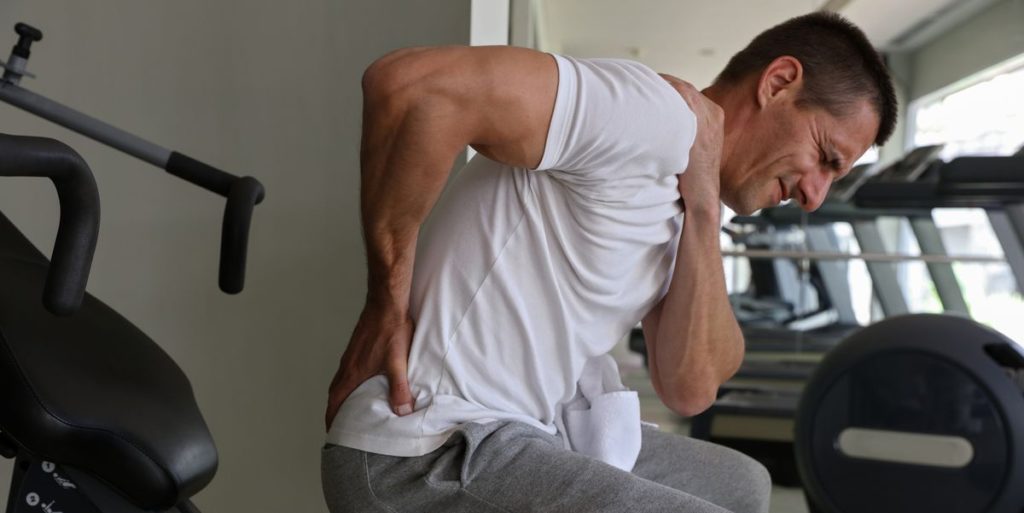

Whether it’s working out for the first time or working out as a part of a routine, it is not uncommon for gym-goers to develop lower back pain.
The research will confirm it! Back pain is one of the most common injuries amongst beginner weightlifters.
It is a highly common condition that occurs as a result of muscle spasms or strain in the lower spine.
Why is back pain important to treat?
Back pain is a symptom that acts as an indicator of some kind of tissue injury.
The nature of the injury can be something as minor, as muscle tenseness/ soreness, or something more serious, as joint dislocation.
Depending on the severity of the injury, lower back pain can seriously impact the quality of an individual’s life. Not only will it harm one’s progress at the gym, but it can also make day-to-day tasks hard to perform.
Furthermore, the spine also serves as a conduit for nerves to other parts of the body. Hence, injuries in the back can easily result in further complications like a leg or hip inflammation.
For these reasons, it’s important to identify the cause of back pain and eradicate it as soon as possible. Otherwise, not taking action promptly could worsen the pain which may prove hazardous to your health in the long term.
That being said, here are a few quick fixes you can add to your workout routine in order to minimize the risk of developing lower back pain.
1. Exercising with a Proper form
The best way of avoiding back pain during weight lifting is to practice the proper “form” of exercise.
Proper form refers to an accurate technique of exercise, it correlates to two things:
- The exercise must be done in a specific manner (i.e it should be made sure that proper muscle groups are targeted)
- It should be done the same way for each repetition
By practicing proper exercise techniques you can effectively prevent injuries, optimize your performance, and get faster results.
In strength training, proper form can be achieved by keeping the spine in a neutral position.
This position is important because it ensures that the targeted muscle is receiving the work and that no energy is being wasted in targeting unnecessary movements (that provide no benefit).
Keeping the spine neutral also prevents spine-related injuries or back pain which can be very hard to treat later on.
Here’s how you can locate your neutral spine position.
- Stand against the wall and ensure you’re straight
- Ensure these your head, upper back, and tailbone are touching the wall
- You can ensure this by fitting your fingers between the wall and your lower back, there should be ample space to fit the fingers but not too much
Attempt your next workout while focusing on this neutral spine position. You can also ask a trainer or a friend to maintain this for you if it’s your first time trying it out.

2. Proper Stretching
Stretching is a form of warming up, it is done before a workout in order to get the muscles prepped for the series of movements.
Stretching is important because it keeps the muscles flexible and strong. Keeping the tendons flexible is necessary to allow a range of motions attempted in a workout.
Without stretching properly, the muscles will remain stiff. Hence, while exercising, the muscles will not be able to extend like how you require them to. This can result in pain and a high number of tissue injuries to ensue.
There are two forms of stretches that are done prior to a workout. Your workout routine should include a mix of both.
- Dynamic stretches
These are stretches done with a movement (i.e lunges and torso twists)
- Static stretches
There are stretches done while keeping still (i.e stretching triceps or legs)
Remember to also stretch after a workout. This is important because working out stiffens muscles and stretching helps to release this tension.
Overall, aim to incorporate 2 to 5 minutes of stretching pre and post-workout. Doing this can effectively eliminate or reduce the risk of back pain. Here are a few stretches you can try for yourself.
3. Determining Progress
It takes consistency, time, and effort to achieve results from a workout. You should start to see muscle growth about 2 to 3 months after working out.
This is because your muscles take time to adapt to the stress before they grow larger and stronger.
Since the muscles take an ample amount of time to adjust to the routine, highly intense workouts should not be attempted until the body is ready to bear the stress.
Otherwise, increasing the weights or sets (before your muscles have adapted) can drastically increase the number of muscle tears which may lead to excruciating pain or a muscle pull.
Therefore, before increasing the number of sets/weights, the overall workout progress should be accurately determined.
You can measure your progress by:
- Measuring the size of your muscles
- Take progression pictures
- Measuring the body composition
- Calculating workout volume and jotting down the progress
By measuring your progress, you’ll be able to estimate the load capacity that you can handle. Following that will help lower the chances of having back pain.
Weight lifting Belt and Waist Trainers

Lifting Belts
A weight lifting belt (also known as a brace) is a tool used by weightlifters as a means of maintaining posture while lifting.
It achieves this effect by reducing the overall stress in the lower back and by compressing the abdominal muscles.
This abdominal compression increases the intra-abdominal pressure which then helps stabilize the spine and keep it more erect. Thus, reducing the load on it.
A belt can also be helpful in preventing unwanted movements in the back which can otherwise lead to painful muscle pulls and aches.
Hence a weight lifting belt is ideal for those that experience frequent back pain.
In order to maximize the benefits obtained from a weightlifting belt, it must be worn tightly. Care should be taken in not using it for prolonged periods of time. This is because a weight lifting belt may contribute to very high blood pressure.
Aim to use the belt for:
- Exercises such as the squat or deadlift, where maximal lifting is done and the back is utilized
- Exercises such as the military press where the back may hyperextend
It is also advised to loosen the belt between sessions in order to allow blood pressure to level off.
Regardless of the benefits, a weight lifting belt should be used in moderation as ill effects like high blood pressure and abdominal muscle weakness may ensue, especially if the belt is used in the wrong way.
Waist Trainers
Waist trainers are another alternative people tend to use for pain management.
These are garments worn primarily for aesthetic purposes. They aim to cinch the waist to provide a sleeker-looking waist.
As such, they have no measurable effect on reducing back pain.
They do, however, provide temporary pain relief by tightening the core. They have no long-term benefit in terms of pain prevention or weight loss.
Moreover, increased use of trainers may pose a myriad of complications like breathing problems, digestive issues, organ displacements, and even bone fractures.
How to Manage Back Pain?
The best form of management you can do for lower back pain is to avoid it from happening, but if it does occur, then it’s best to manage the problem as soon as it arises.
Here are some steps you can take:
1. Upon experiencing any form of pain, stop the workout, immediately
This is important as exerting pressure on an already painful spot can further damage the tissues and increase the pain.
2. To manage the pain, try to keep activity at low but not zero
Resting when you are in pain is contraindicated.
Instead, you should maintain some form of low-intensity activity like walking.
Walking is a great way of managing pain. If you find that you have back pain, aim for 10 to 15 mins of brisk walking every day. Try to do this for 2 to 3 days.
If the pain doesn’t subside it is advised to seek medical attention.
3. Do not ignore the pain
Many lifters tend to ignore back pain and go about the exercise anyway.
This is highly dangerous as the back pain can actually stem into something worse like hip or leg-related issues.
If you find that your pain persists after a week, it is best to see a doctor as it could be something much more serious.
4. Do not skip warmup
Many weightlifters tend to skip warmup thinking they wouldn’t require it at their level of expertise.
However, the truth is that most back complications arise when pressure is put on the spine without a warmup, regardless of the level of expertise.
Therefore, before attempting a resistance workout, aim to warm up for 5 to 10 minutes with some light to moderate cardio.
5. Strengthen the back
Exercises that strengthen the back and core can help correct a slouching posture. This will help keep your spine more erect and prevent the likelihood of back pains.
Here are a few exercises you can try to strengthen your back.

What Exercises Should You Avoid with Back Pain?
As a general rule, any form of exercise should be avoided until your back is completely pain-free.
However, if you must follow a regime, it is best to avoid high impact exercises like:
- Running
- Jumping
- Waist twisting
- Muscle Extensions
Instead, you should opt for low-intensity exercises like:
- Brisk Walking
- Water aerobics
- Stationary biking
- Stretches
As for weight lifting, avoid exercises that require:
- Overhead or shoulder movements
- Too heavy of weights
- Excessive Swinging
Bottom Line
Back pain is common in weightlifting and training. If improperly treated, can lead to more serious issues if untreated.
Make sure to stretch and warm up your back muscles before working them out. If you injure your back during a workout, stop! Give yourself time to heal and recover.






















You must be logged in to post a comment Login